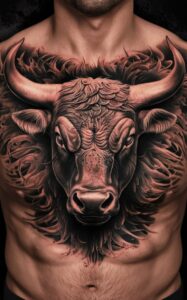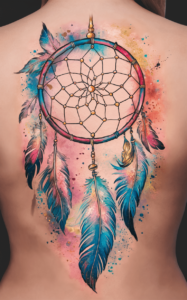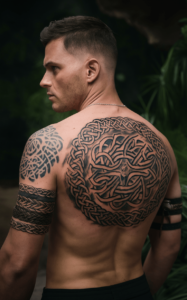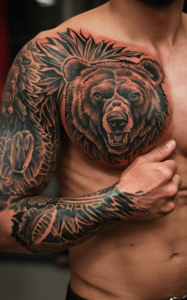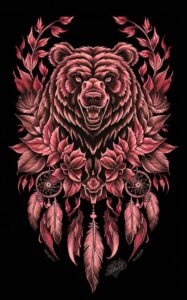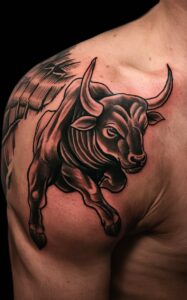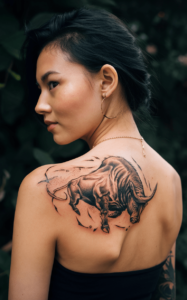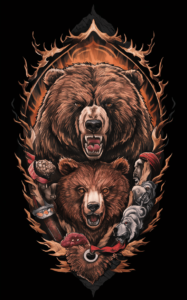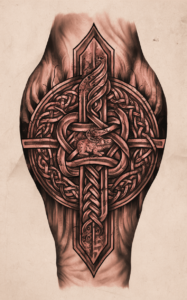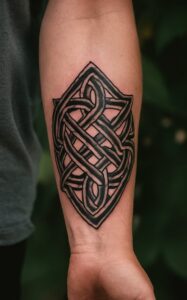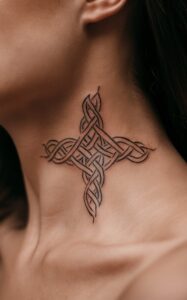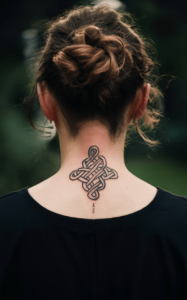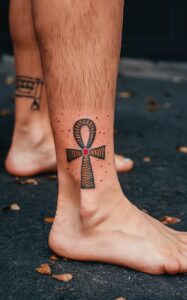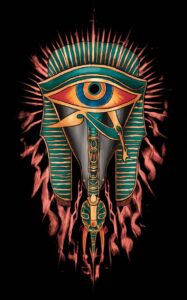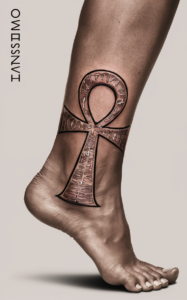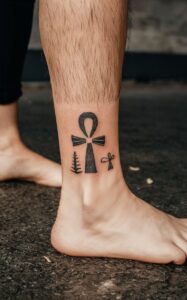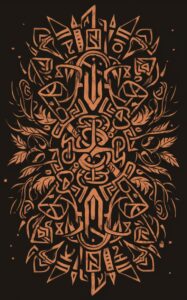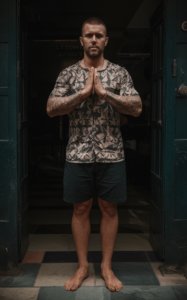Tattoos
Protection Tattoos Everything You Need To Know
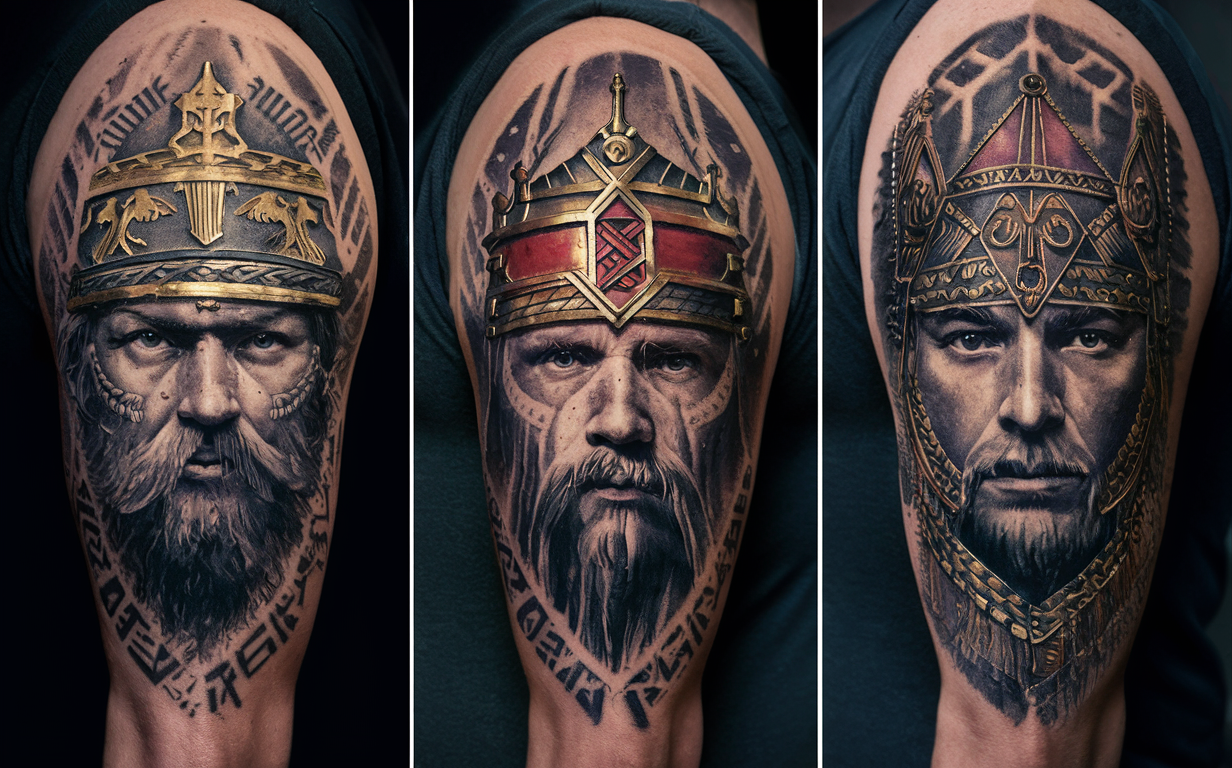
Many people who get tattoos don’t even know the deeper meanings of them and don’t take the time to learn about them. Nonetheless, spiritual individuals who are wise and meticulous take extra care when doing their homework before getting their next tattoo.
Several sources claim that tattoos dating back almost 6,000 years have been discovered on some of the oldest mummies. They are thought to have been used to ward off evil luck and bring good fortune; we still carry out this tradition today.
What are protection tattoos?
Tattoos can be a symbol of a person’s social standing, just for decoration, or even a spell to ward off bad luck and various evil spirits. It’s no secret that many cultures throughout the world, divided by oceans, have used tattoos. They employed them for a variety of purposes, including happiness, luck, healing, and protection.
Protection, protective tattoos can offer their wearer emotional defense as well. For instance, a tattoo of a talisman or protective symbol can act as a continual reminder of the wearer’s grit and resilience, enhancing their self-assurance and giving them a sense of security.
Important of these tattoos
Tattoos were believed to protect against diseases and even death by many societies, including warriors who thought they could also shield against heartbreak.
These days, a lot of people only get tattoos for aesthetic purposes and pay little attention to their other effects. Many people no longer have as much faith in the protective qualities of various tattoos because the deep belief in these properties has begun to wane.
Nevertheless, they wear them as a kind of lucky charm that, if nothing else, might shield them from bad luck and jinxing. They also use them to look real and stunning to onlookers. Many people also search for various cultural connotations of these tattoos in order to authenticate their tattoos.
Various Types of Protection Ink
Depending on their protection symbol, various cultures have various tattoos representing protection. To determine the most popular protection tattoo throughout history, let’s take a close look at global culture.
Native American Protection Tattoo
Native American protection tattoos are usually a good place to start if you’re looking for tattoos that protect you from evil. Native Americans used their original symbols, which worked well to ward off evil spirits because they believed that both good and evil spirits lived in nature.
There are numerous Native American tribes from Alaska to South America, and each one has distinctive tattoos. They thought that having ink on their bodies would both heal them and ward off evil spirits. For them, getting tattoos was a whole protection ritual in which they were energizing the evil spirits.
Bulls
Although the Native American tribes were living surrounded by gold, it’s no secret that they weren’t as interested in its value as the European settlers who came to America.
Bulls are recognized as symbols of wealth and fortune protection. The bull tattoo is the perfect way for those who are working on businesses that need assets to grow to symbolize the symbol of wealth.
The Dream-CDreamcatcheraDreamcatchers are extremely popular, but their appeal first emerged in the Bohemian and Boho-Chic cultures. The fact that Dream-catcher’s American roots are not widely known.
Since we spend roughly one-third of our lives sleeping, dreams are significant to our daily lives and are often the result of our wishes, fears, and other life events.
DreamcaDreamcatchersrely found alone; many have tattoos of deer, wolves, eagles, horses, bears, and other animals with dream-catchers. Typically, people want to communicate more than just protection.
Bears
The bear’s primary symbolism is linked to bravery, assurance, and confidence, as well as tranquillity and relaxation.
Because they can become fiercely protective, bears are still regarded as a symbol of the preservation of peace and solitude. Bears are renowned for their ability to protect their areas, and they won’t take any valuables with them.
Japanese Tattoos for Protection
Celtic culture used knots as a language of love, as seen in various pop cultures featuring Celtic imagery. When doing so, though, exercise extra caution because both your tattoo artist and yourself should be well-versed in their craft. A single error could cause a tattoo to signify something different than “protection,” which is what it should.
Turtle Tattoo
In Japan, people revere turtles for their symbolism of longevity and protection, but few consider tattooing one on their body. They interpret the turtle’s sluggish gait as a sign of humility and associate its lengthy lifespan with wisdom and longevity.
But they also bring protection and good fortune, particularly if you’re starting a new business.
Tattoos of Celtic Protection
Celtic culture is characterized by strength, protection, and warfare. This tribe uses a wide variety of patterns and textures in their symbols, with knots being among the most widely used. Celtic culture used knots as a language of love, as seen in various pop cultures featuring Celtic imagery.
Spiral Tattoo
Celtic culture used the single spiral to symbolize infinity and lunar cycles. Additionally, protection symbols often incorporate a single spiral in knot designs.
The Knot of Shield
Celtic culture uses numerous knot symbols, most of which represent protection and are popular on armband tattoos. Celtic warriors wore the shield knot, one of many Celtic knots associated with infinity, for protection against evil spirits and opposing forces. Four corners encircle it.
Triquetra
The second most significant Celtic protection symbol is the triquetra, which is a common tattoo embellishment nowadays. The Triple Goddess symbol, representing the mother, maiden, and crone, dates back to 500 BC.
African protection tattoos
Hand of Hamsa
The Hamsa hand, an ancient amulet from the Middle East and North Africa, represents the Hand of God and can ward off evil spirits while shielding the wearer from harm. Artists frequently portray the Hamsa hand as a palm-shaped amulet with spread fingers.
The Komainu Lions
Lions can also be a symbol of protection and guidance in Japan, just like they are in East and Western Africa. Naturally, they also stand for power, bravery, and strength. People choose the lion as a tattoo symbol due to its connection to guarding their house and “territory” and its ability to ward off evil spirits in Japan.
It’s important to note that the realistic representations of African lions in symbolism differ from those of Japanese lions. The lion-dogs, or Komainu, are another name for the Japanese lions, so named because of how they appear in artwork.
The God Tree
The Tree of God, or Nyame Dua, is a prominent West African symbol representing divine protection by God or a good spirit.
People revere the place where this tree lives as divine and sacred, similar to temples and altars where people pray. People would gather close to the Nyame Dua to offer prayers for love, courage, strength, and protection and even perform rituals in its vicinity.
Egyptian protection tattoos
One of the most important inspirations for protection tattoos originates from Ancient Egypt, specifically from the revered and adored god Horus. Horus was the sky’s ruler and God. He had two eyes: one for the moon and the other for the sun.
One of the earliest civilizations civilizations Egypt, and the idea that the Eye of Horus offers protection and salvation has endured to this day. For this reason, a lot of people continue to tattoo them, using both colourful and black ink.
Horus’s Eye
With origins in ancient Egyptian culture, the Eye of Horus is a potent symbol of protection. According to Egyptian mythology, Horus the God lost his left eye in a fight with Set the God. After the God Thoth repaired the Eye of Horus, it came to represent strength, protection, and healing.
These days, people frequently use the Eye of Horus as a protective tattoo design, signifying the tenacity and grit of the wearer.
Ankh
The Ankh, an ancient Egyptian symbol, is one of the most iconic and well-known symbols in history, yet its significance is still unknown despite its widespread use.
Ancient Egyptians believed that the Ankh symbolized the journey of life from conception to death.
War protection tattoos
Valknut
It served as a wartime emblem of protection and glory. Warriors used it as proof to enter Valhalla, the Viking paradise equivalent of the afterlife, where they would meet their honour and glory.
As a result, the valknut came to represent Odin’s protection. Although more commonly used in jewellery than tattoos, it empowered individuals facing challenges and fearing they wouldn’t survive.
Viking Protection
Today’s tattoos have a variety of protection symbolism that comes from the Norsemen and Vikings. After all, they proudly wore tattoos commemorating their lives and military victories, even though other countries considered them to be barbarians.
The Vikings were heathens who delighted in the blessings and belief of their gods. Along with worshipping their gods during battles, they also offered numerous sacrifices of humans and animals to celebrate impending wars and victories.
Swastika
For millennia, people have utilized the Sutilized symbol as a shield. Hindus consider the Swastika a revered symbol that wards off evil and brings prosperity to those who wear it. Buddhists and Jains believe that the Swastika is a power that permeates the universe and the feet of the Buddha.
These customs frequently use the Swastika to ward off evil spirits and shield people from harm.
The ideal spots for protective tattoos
Individuals frequently determine the placement of their protection tattoos based on their needs, preferences, and the meaning of the design they choose.
The forearms are a common area for protective tattoos. This position makes the tattoo easily noticeable and gives the wearer physical protection. The upper back is another typical location, which can shield the wearer’s important organs.
Choosing where to get protective tattoos is a very personal choice that should be based on the needs and preferences of the individual.
Conclusion
When choosing a protective tattoo, consider its meaning, significance, and cultural and historical context.
For centuries, if not millennia, people have revered and believed in the protective qualities of certain tattoos. Some believe that certain tattoo symbols can ward off evil spirits and schemes. That could refer to anything and anything that might put you in danger.

-
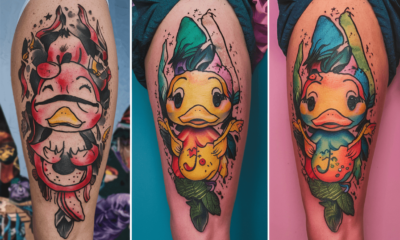
 Tattoos9 months ago
Tattoos9 months agoDuck tattoos 35+ Ideas with amazing designs and details
-

 Tattoos9 months ago
Tattoos9 months agoElephant Tattoos Symbolism, Design, and Placement Guide
-
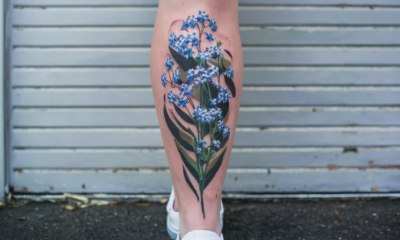
 Tattoos8 months ago
Tattoos8 months ago“Forget me not” tattoo – Mystery behind the flower
-
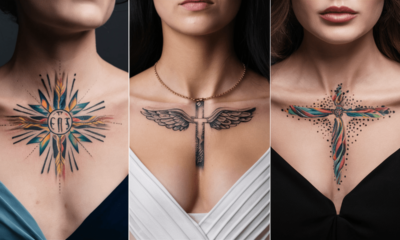
 Tattoos6 months ago
Tattoos6 months agoInspiring God Tattoo Ideas: Designs That Speak to Your Faith and Spirituality
-

 Tattoos9 months ago
Tattoos9 months agoExploring the Depth of Meaning Behind Flower of Life Tattoos
-

 Tattoos8 months ago
Tattoos8 months agoHakuna Matata Embracing the Spirit of Meaningful Tattoo Designs
-

 Tattoos6 months ago
Tattoos6 months agoCreative Dropkick Murphy Rose Tattoo Ideas for Fans
-

 Tattoos9 months ago
Tattoos9 months agoThe Delightful “Just Breathe” Tattoo

